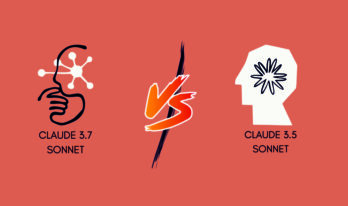Agile v/s Scrum
The first decision that you will have to make while initializing a project is the implementation of the project methodology. The frameworks that are generally implemented vary from Kanban to Waterfall to Scrum to Agile.
They follow different paths and are based on your requirements. Therefore, you have to decide which methodology to apply. Here we will be discussing Agile v/s Scrum.
With the dynamic changes in the customer demands and requirements of the projects, the companies are changing their approach from traditional Waterfall Methodology to Agile Methodology. Hence, it is important to delve into the topic of Agile v/s Scrum to better understand the right approach for your business.
Agile Methodology
An incremental, iterative approach that enables the changing requirements based on feedback from end-users instead of having in-depth planning right from the beginning.
It can be implemented with Scrum, Extreme Programming (XP), and Rational Unified Process (RUP). As Agile is a more flexible Methodology, it lets the teams bypass the sequential model and finish the work in a shorter time and with better efficiency.
In ever-evolving projects where the end goal is not defined, Agile Methodology comes in handy as it adapts to the change seamlessly.
The iterative approach lets the teams concentrate on high-quality development, as the project can be broken down into smaller units.
As the Methodology enables the feedback from the end-users to change it according to their constructive inputs, the customers feel satisfied.
Each step of the development is monitored during the lifecycle. The Project head takes care of all the tasks.
.
Therefore, prioritizing customer satisfaction with the continuous delivery of valuable software.
Scrum
The most popular framework to implement the Agile Methodology is Scrum. Its popularity is so much that most novice users assume that Scrum and Agile are the same thing. Scrum also works with the iterative approach as it follows the Agile Methodology.
Though Scrum is more suited for projects where the requirement is rapidly changing, this framework is more rigid than the Agile Framework which limits the changes while implementing the system.
Unlike the Agile framework, the design can be more innovative, and within the scope of some experiments.
There is a division of projects into sprints lasting for one, two, or three weeks typically. All the stakeholders meet at the end of every sprint to discuss and assess progress and make their plans accordingly.
There are three roles in the Scrum Framework
Product Owner
It is generally an influential player ranging from Project Lead, Marketing Head, Product Manager Etc. The product owner motivates the team to achieve and exceed the goal set.
As the product owner is solely responsible for the project backlog, that person has to have a clear idea as to how to take the project forward, achieve set goals and optimize the value of the work. The product Owner is a person and not an entity.
So, to achieve the set goals the entire team has to respect the decisions made by him/her and fulfill their respective responsibilities.
Scrum Master
The Scrum Master works as a facilitator between the Product Owner and the team members. He/ She has to ensure that the team members understand the directives of the Product Owner. Also, to ensure that it is carried out in the same manner.
The Scrum Master also has to understand the obstacles coming in the team member's way. Also, make sure to address and take care of the same.
However, the Scrum Master doesn’t have the authority of a Product Owner. He/ she can’t change the directive principles and meet the goals within the authority.
Development Team
It is the team of individuals working under the guidelines of the Product Owner. Therefore, to achieve and exceed the set goals. It generally consists of 5-7 members from software developers, testers, architects, QA, etc.
If the development teams are cohesive as a unit, then they can deliver the results. Successful development teams have the required skillset and they are generally cross-functional.
Further, dividing the team into sub-teams such as the development team, testing team, etc. for better functionality.
For any project to succeed, the development team has to be cohesive, comprehensive, and obliged to deliver results.
Conclusion:
Hence, concerning the above discussion, the fundamental difference between Agile and Scrum is that Agile is a development methodology and Scrum is one of its implementations of it.
You may also like to read:




